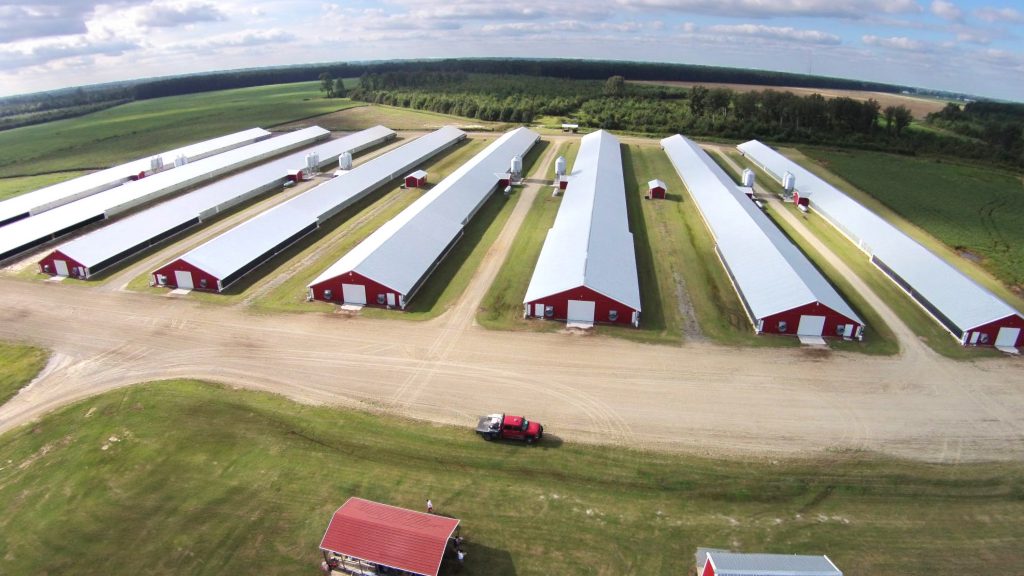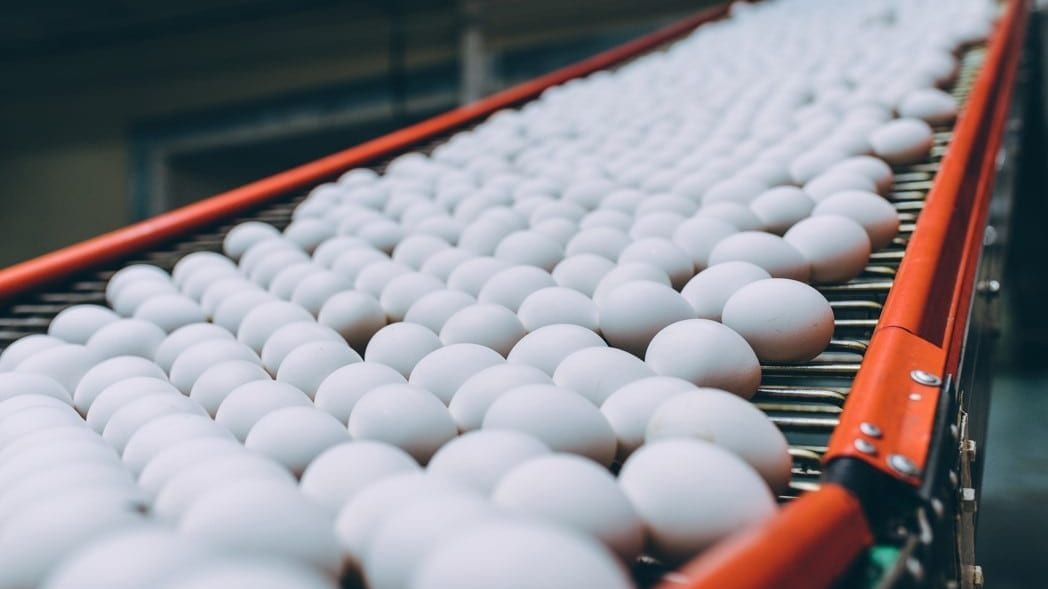A constant egg supply is key to keeping up with your business’s demand for eggs. Eggs Unlimited partners with farmers across the U.S. to keep up with production volumes that meet your demand. Through our strong partnerships, we will meet any challenges in the egg industry. No challenge is too big, whether its issues with a farm’s flock or the entire egg supply chain, we are undefeated. We’re always ready – and eager – to bring farm-fresh eggs to our customers.

Egg production trends
In 2020, farmers across the U.S. produced 96.9 billion table eggs from 325 million commercial egg-laying hens. Each egg-laying hen laid roughly 296 eggs in 2020, which is a large increase from 278 eggs in 2010.
This increased rate of egg production may pertain to how egg-laying hens’ are raised. At the end of 2020, 28 percent of hens were in a cage-free environment, which is up from 14 percent in 2016. These environments give hens unlimited access to food and water and full freedom to roam within their hen house.
How is egg production optimized to meet market demand?
To meet market demand, farmers have introduced better hen housing and nutrition. Farmers may also choose hen breeds that lay more eggs to increase egg production. The following are some ways in which egg production is optimized to meet demand.
- Improved feed. commercial flocks that rely on scavenging for food usually yield low egg production as a result. That’s why farmers feed their birds a complete diet or provide diet supplementation alongside natural scavenging. For example, organic eggs are sourced from hens that are fed a diet of non-genetically modified feed. This feed does not include pesticides, synthetic fertilizers, animal byproducts, and chemical additives. The result is healthier hens that can lay more eggs.
- Housing. cage-based housing allows farmers to control their hens’ environment which limits pathogen and parasite exposure. Some farmers also use “enriched colony housing systems” through which they can produce cage-free eggs alongside standard chicken eggs.
- Improved breeds. Industrial farmers might choose specific hen breeds that are known to produce more eggs. This can maximize production.

Where are eggs produced?
Eggs are produced in 34 U.S. states, with more than 50% of these eggs originating in the Midwest. In fact, the top three egg-producing states—Iowa, Ohio, and Indiana—are all in the Midwest and comprise one-third of American egg production.
How are egg production spaces designed?
Maximizing industrial egg production involves a balance among the below factors.
- Climate. Industrial hen housing is typically designed to minimize, if not eliminate, the birds’ exposure to excessive precipitation and extreme temperatures. Farmers will lower their hen housing’s temperature if the birds are panting or sitting with their wings held out. They will also increase the temperature if the hens are ruffling their feathers or huddling.
- Lighting. Lighting plays a key role in stimulating egg production. Typically, as the days grow longer and there are more sunlight hours, farmers can expect more eggs.
- Ventilation. Hen houses are designed to ensure optimal airflow for all birds. The airflow must be sufficient enough to minimize the presence of dust, ammonia, carbon monoxide, methane, and hydrogen sulfide.
- Waste removal and cleaning. Each time a new flock arrives, the hen house must be thoroughly cleaned. Houses are kept free of manure and waste continuously to help keep hen houses clean.
- Egg belts. Industrial farmers often use egg belts to gently, safely transfer eggs directly from hen nests to processing or packing factories. These systems are designed to reduce the time and labor spent harvesting eggs and minimize the number of unclean or cracked eggs.
- Processing facility. Freshly laid eggs are typically collected and transferred automatically to a processing facility. There, all the eggs are washed and sanitized so that no dirt and debris remain. They are thereafter sorted into sizes by weight, inspected for quality, and packed – all by machine.
- Feeding. Fresh feed must be accessible to the hens at all times. Depending on the hen house’s structure, the hens must have access to either 1.5 linear inches or 1.5 perimeter inches of feed or feeder space. All feeders must be located within 26 feet of the hens, and stale feed must be replaced. Any feed contaminated with insects or rodents, litter, feces, or mold must also be replaced. Clean, fresh water must be accessible as well.
The rate of egg consumption and how eggs are consumed
In 2020, 315.91 million people used eggs in the U.S. Each person used roughly 286 eggs per year, or about 24 dozen cartons’ worth.
The basic production cycle of laying hens
The production cycle of laying hens begins when they enter their maturity stage at 19 weeks old. The maturity stage is from 19 to 70 weeks old, with the hen’s egg-laying rate declining as they become more mature. Egg production typically peaks at between 25 to 39 weeks old.
Light plays an important role in stimulating the hens to lay eggs. In fact, artificial lighting can regulate hen hormones that affect the egg-laying process. That’s why, once the hens reach maturity, they’re moved to a lay house where they’re exposed to artificial light. Once there, it often takes a hen roughly 23 to 27 hours to lay an egg.
The role of the USDA in egg production
The USDA Economic Research Service provides monthly reports on the egg industry’s outlook. This data includes present-day metrics on supplies, trade, prices, and egg usage alongside comparisons to historical data. Farmers can use this information to determine how many eggs they should produce and how profitable their production might be.
The USDA also conducts site visits to ensure that organic or cage-free farmers and egg suppliers meet their definitions of these terms. Cage-free hens must be able to roam around an enclosed space and freely access food and water. Organic eggs must come from hens in flocks of fewer than 3,000. These hens must receive non-GMO feed lacking animal byproducts, pesticides, chemical additives, antibiotics, or synthetic fertilizers. They must also be allowed to undergo natural molting and access the outdoors.
Egg producer certifications
Egg producers can obtain the United Egg Producer certification (UEP) to show that they follow scientifically-backed guidelines on how to best raise hens. In the U.S., over 90 percent of eggs come from farms with this certification. At Eggs Unlimited, we offer egg products certified by UEP, Humane Farm Animal Care (HFAC), and American Humane Certified (AHC). We also offer eggs that the USDA has certified cage-free or organic, or both.
Why Eggs Unlimited?
As one of the largest egg producers in the U.S., Eggs Unlimited is well equipped to face any challenge. That includes increasing demand for eggs, issues with a specific farm, and challenges across the supply chain. As customers explore their egg options, our knowledge, resources, and experience can help them make smart, cost-effective choices.
At Eggs Unlimited, we partner with farmers and suppliers that care about their animals and the environment. We’re proud to work with farmers who follow robust environmental and ethical practices. Plus, with our global reach, we can take on any challenge for customers all around the world. We always have a way to meet – and exceed – our customers’ expectations.
Connect With Top Egg Producers
Connect with the Eggs Unlimited Sales team to learn more about your egg options. eusales@eggsunlimited.com
